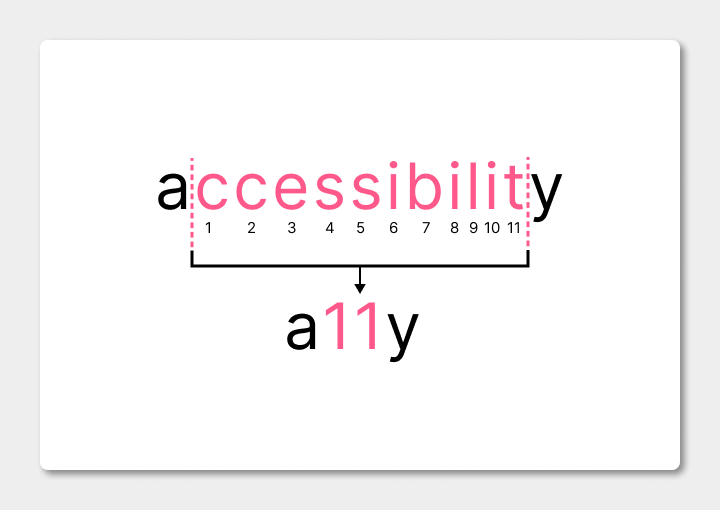How we approach accessibility
According to the CDC website 1 in 4 Americans have some type of disability that impacts their life. As a product team at Tenejo, we want to provide an accessible and inclusive digital experience to as many different types of users as possible.
Background
When we talk about accessibility, we mean websites that are designed to be understood by the widest possible audience. Accessibility means that those with common disabilities can do things like – order food, apply for jobs and search for scholarly articles on a website.

Fig.1 - Accessibility = a11y
How do we measure it
We use tools built into the browser and extensions to help guide us with industry best practices. Google Lighthouse is built right into Google Chrome and provides insights and steps to rectify common mistakes. Deque axe DevTools provides more robust actions, bug catching and insights than any other tools.
There are some common quick tests you can perform as a first pass.
- Can I resize the text, so users with visual impairments can read the text more easily?
- Are my page links and button targets large enough to be usable, so folks with limited motor control can click them easily?
- Can I navigate the site with my keyboard, so users using screen readers or alternate input devices can navigate the content more easily?
Standards
Industry standards provide a framework for best practices. With Tenejo, we strive for WCAG 2.1 AA compliance. This standard ensures that text, images and sounds on a website are available to all. These standards ensure that the markup is consistent and organized for assistive technologies.
Our Process
Accessibility shouldn’t be an afterthought – a check box at the end of a software development project. As we build our features and updates, we ensure that it improves access in a meaningful way.
One thing that gets flagged in accessibility testing is low or bad color contrast. When we built a theme builder for Tenejo, we took this into consideration. Depending on the theme colors you select for your site, Tenejo automatically determines whether to display the text in black or white to provide the best contrast. This ensures readability for the widest audience possible.
We use the Apple VoiceOver screen reader to test to make sure our page structure matches our intent. This helps us answer some important questions. Can a user navigate the site in a meaningful way? Is the text clear and intuitive and does it convey intent in the context as well as function? Did the VoiceOver describe the images correctly? Asking ourselves these questions helps us figure out what's going on the page and prompts any changes that need to be made.
This is just a sample of some of the tools and processes that we use as we think about accessibility.
Summary
Including accessibility throughout our process and understanding the tools and resources available leads to a richer experience for the widest possible audience. We believe this results in a better designed experience for users of any ability.
Links for more information:
- CDC: Disability Impacts All of Us
- The A11Y Project
- Google Lighthouse
- Deque Axe DevTools
- Web Content Accessibility Guidelines (WCAG) 2.1
- WebAIM
Are you interested to learn more about Tenejo? Let's chat. Check out the links below or shoot me an email.